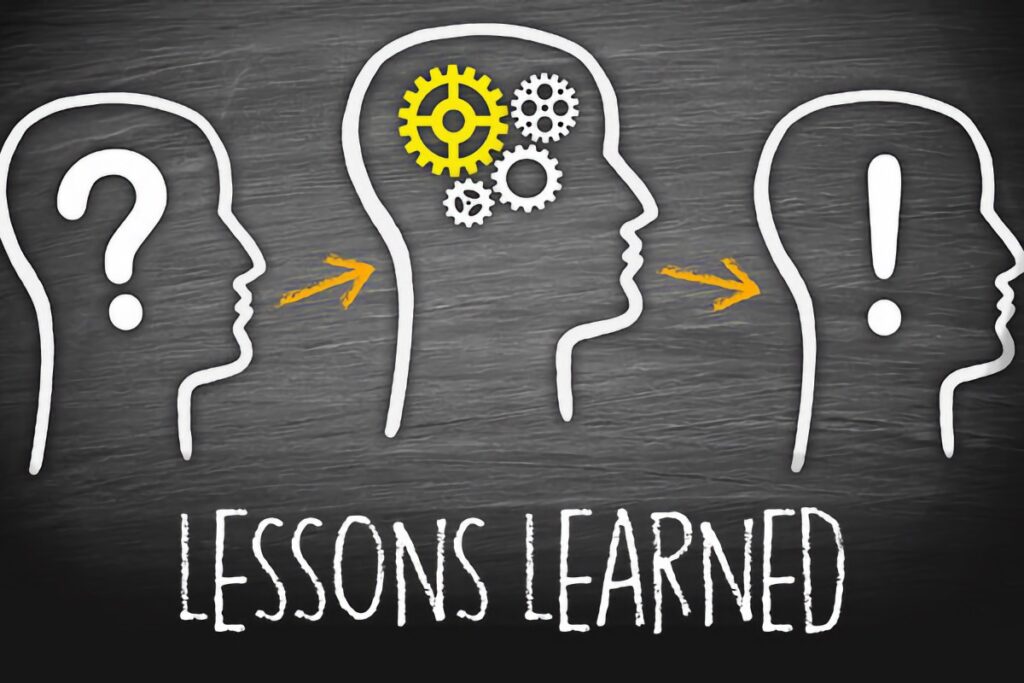Turning Project Experience into Organizational Wisdom
Projects end. But the learning shouldn’t.
One of the most underleveraged assets in any organization is the knowledge gained through experience—what went right, what went wrong, and why. Unfortunately, in the rush to move on to the next initiative, too many teams close a project without closing the loop. As a result, mistakes are repeated, wins aren’t replicated, and teams are constantly reinventing the wheel.
That’s where a disciplined approach to lessons learned and knowledge transfer comes in. It’s not just a nice-to-have. It’s a critical pillar of project integration management—the process of making sure all parts of the project lifecycle work in harmony, including the end.
Done well, lessons learned and knowledge transfer can transform individual project experiences into organizational learning, driving continuous improvement and long-term success.
The Problem with “We’ll Do It Next Time”
Most project managers intend to document lessons learned. But intentions don’t always become actions.
Why?
- Teams are burned out or pulled onto new work before a proper debrief.
- Stakeholders prioritize delivery over reflection.
- There’s no standardized process or repository to capture findings.
- Even when lessons are captured, they aren’t shared—or worse, they’re buried in slide decks no one ever reads.
The result? Knowledge fades. And so does opportunity.
Organizations that fail to learn from the past are doomed to repeat it—not because they’re careless, but because they don’t operationalize learning.
Lessons Learned: More Than a Post-Mortem
The term “lessons learned” is often misunderstood as just a checklist of what went wrong. But in mature project environments, it’s much more than that.
Lessons learned include:
- What worked well and why?
- What didn’t work, and what would we do differently?
- How did stakeholder expectations evolve?
- What tools, processes, or behaviors accelerated (or hindered) delivery?
- Were the original goals realistic—and were they the right goals?
When this analysis is conducted thoughtfully, early, and often, it becomes a living feedback loop—not just a box to check at project closure.
Best Practices for Capturing Lessons Learned
- Make It a Lifecycle Activity
Don’t wait until the end. Build regular reflection points into the project lifecycle—after major phases, milestones, or releases. - Create a Safe Environment for Honesty
Psychological safety is critical. Lessons learned sessions should focus on learning, not blame. Encourage open dialogue across levels and functions. - Use Facilitated Workshops
External or neutral facilitators can help draw out insights, especially in politically charged or complex projects. - Go Beyond the Project Team
Interview external stakeholders, customers, sponsors, and vendors. Their perspective is often overlooked—but invaluable. - Standardize the Capture Process
Use templates that prompt analysis across key domains: scope, schedule, budget, quality, communication, risk, change, and stakeholder management. - Prioritize and Summarize
Not every insight is equal. Identify high-impact takeaways and summarize them in digestible formats for broader audiences.
Knowledge Transfer: Keeping Wisdom Alive
Capturing lessons is just the beginning. The real value comes when that knowledge is transferred to others—future teams, departments, business units, and even vendors.
This is where many organizations stumble. Documentation without dissemination is just digital dust.
Effective knowledge transfer requires:
- Centralized Repositories
A searchable, easy-to-navigate system where lessons, templates, and playbooks are stored—whether in SharePoint, Confluence, Notion, or a custom KM platform. - Tagging and Categorization
So project managers can easily find lessons related to their project type, industry, or stakeholder group. - Onboarding Integration
New project managers or team members should be introduced to relevant lessons as part of their ramp-up process. - Community of Practice (CoP) Engagement
Use forums, lunch-and-learns, or monthly CoP meetings to share lessons across functions and geographies. - Feedback Loops
Encourage project teams to add to and update knowledge bases based on new findings—keeping content fresh and relevant.
The PMO as the Knowledge Backbone
In organizations where learning sticks, the PMO often plays a central role in:
- Designing and enforcing the lessons learned process
- Hosting and maintaining the central knowledge repository
- Facilitating cross-project learning through reports and forums
- Connecting lessons learned to training, methodology updates, and toolkits
- Driving accountability for continuous improvement across portfolios
PMOs that take this role seriously become guardians of institutional memory, reducing failure, accelerating maturity, and boosting delivery confidence over time.
Tools That Support Lessons Learned and Knowledge Sharing
Digital platforms can make or break knowledge transfer. Some commonly used tools include:
- Confluence / SharePoint – For centralized documentation, tagging, and access control
- Notion – For intuitive, visual knowledge databases
- Miro / MURAL – For collaborative lessons learned workshops
- Project Insight / Wrike / Monday.com – For linking lessons directly to project records
- Power BI / Tableau – For analyzing patterns across lessons and feeding insights back into strategic planning
Whatever tool you choose, the key is accessibility, relevance, and ease of contribution.
Lessons in Action: A Real-World Example
A multinational engineering firm noticed recurring issues with procurement delays across large infrastructure projects. The PMO conducted a cross-project lessons learned analysis and discovered:
- Procurement timelines were consistently underestimated due to outdated lead time assumptions.
- Vendor onboarding was delayed by compliance checks not accounted for in project plans.
- Internal stakeholder approvals had a high variance based on region.
These insights were consolidated into a new “Procurement Planning Playbook,” which was shared across regions. New estimation templates were rolled out, and vendor checklists were standardized.
Result? Procurement lead times became 15–20% more predictable, and schedule overruns in that phase dropped by nearly 30% in the following year.
Final Thoughts
In fast-paced organizations, there’s always pressure to move forward. But without looking back, you never truly move ahead.
Lessons learned and knowledge transfer are not end-of-project formalities. They are the foundation of growth. They turn experience into insight, and insight into performance.
So next time a project wraps up, don’t just close it—harvest it.
Because the most successful teams aren’t just the ones who deliver. They’re the ones who learn, adapt, and elevate everyone around them.




